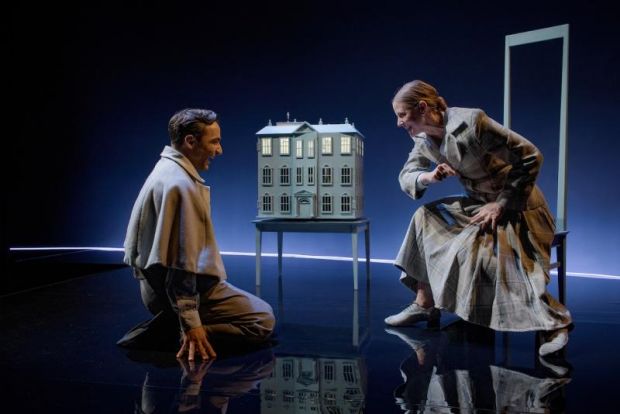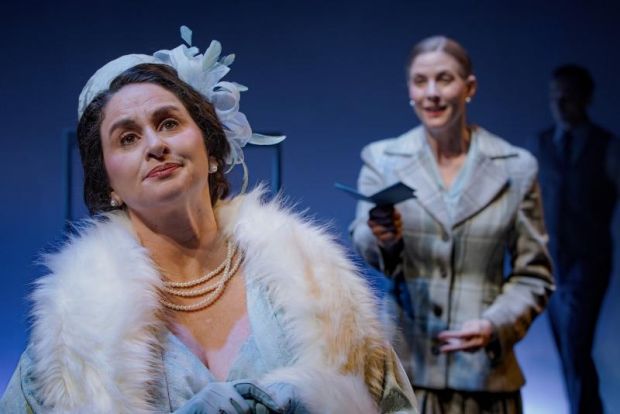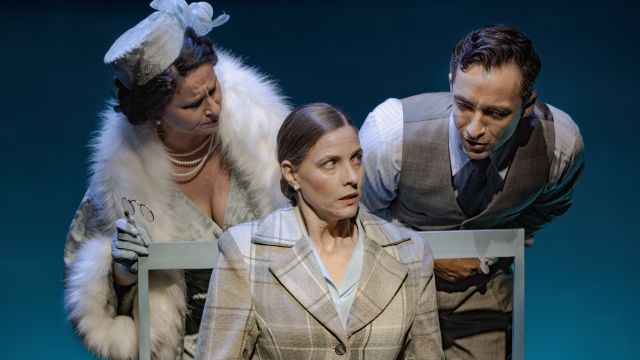The Queen’s Nanny
Prince Harry took “Royal Memoirs” to a new, personal level in Spare, but how many people knew that the very first ‘inside the Royals’ story was told by a Scottish teacher who was hired to look after Harry’s grandmother and her sister in 1933.
Marion Crawford – “Crawfie” as she was called – was governess to Queen Elizabeth and Princess Margaret for sixteen years. She was their teacher, friend and confidante. She saw them through World War II, the abdication of King Edward VIII and her father’s coronation as King George VI.
When some of her memoirs were published in an American magazine and later collected in a book entitled The Little Princesses, Crawford was ‘ousted’ from her retirement cottage in the grounds of Kensington Palace and none of the royal family ever contacted her again. She sought solace in the Scottish town where playwright Melanie Tait’s extended family lived and worked. They knew Crawfie’s story well, and Tait tells it in a play that director Priscilla Jackman fittingly describes as “a taut, playful, yet deeply affecting commentary on power, authorship, motherhood and loyalty”.

Jackman deftly directs the play on a ‘nursery’ set designed by Michael Hankin. On a dark, glassy floor, a low blue table and two high backed nursery chairs might conjure a scene from “Alice in Wonderland”. It is spare and clean, and its minimalism subtly accentuates order and status, which Genevieve Graham continues in her costumes. She picks up Hankin’s blue in the princesses’ mother, Queen Elizabeth’s elegant ensemble. Crawfie she dresses in a grey tartan suit and pale blue blouse. Their shoes are covered in the same fabrics.
That attention to detail and preciseness is a continuing feature of the production. Jackman’s direction is concise, as is the dialogue through which Tait clearly identifies the place, the time and status of the characters. Every word and rhythm is clear, every action exact, every movement carefully considered and executed. Every sound and lighting cue (James Pater Brown and Morgan Moroney) is perfectly in sync with the tone and tenor of the action.

Elizabeth Blackmore is outstanding as Marion Crawford. She gives Crawfie a presence, an essence of strength and purpose, an ability to rise above condescension and class. Her Scottish accent sounds very natural, even the slight burr she sustains after she has ‘adapted’ her speech as required by her employer! Blackmore shows that Crawfie accepts her place but won’t be cowered. With Elizabeth she defers slightly; with Lilibet she is warm and loving, though suitably strict.
Emma Palmer is Elizabeth. She finds the contradictions that Tait (and history) have given the woman who became “the Queen Mother”. Palmer makes Elizabeth haughtily condescending but also a bit flippant, softening her arrogance with almost impish asides about parties and drinking. Palmer uses her eyes to great effect, holding them fixed and glaring if annoyed, or flashing them in a way that suggests she’s sharing a salacious secret.

The other characters are played with amazing clarity by Matthew Backer. At first, he is “J” the Australian narrator/journalist who links events and passing years. He is also Ainsley, stiff, deferential butler/secretary to the royal household; and the American editor who cajoles Crawfie into telling her stories. More importantly, he is Lilibet the young princess, besotted with horses and eager to learn from her new teacher. No scene is more poignant than Backer as Lilibet making her first trip on the Tube with Crawfie. Backer shows her childish curiosity and naivety in a way that is realistically beguiling.
Though Tait’s play is a stark reminder of the wealth and power of the nobility and the barriers of “class”, it is also a story about love and warmth, trust and loyalty – and the woman who gave up her own chance of motherhood to guide and educate the young princess who would reign over the British Commonwealth for more than 70 years.
Carol Wimmer
Photographer: Phil Erbacher
Subscribe to our E-Newsletter, buy our latest print edition or find a Performing Arts book at Book Nook.

